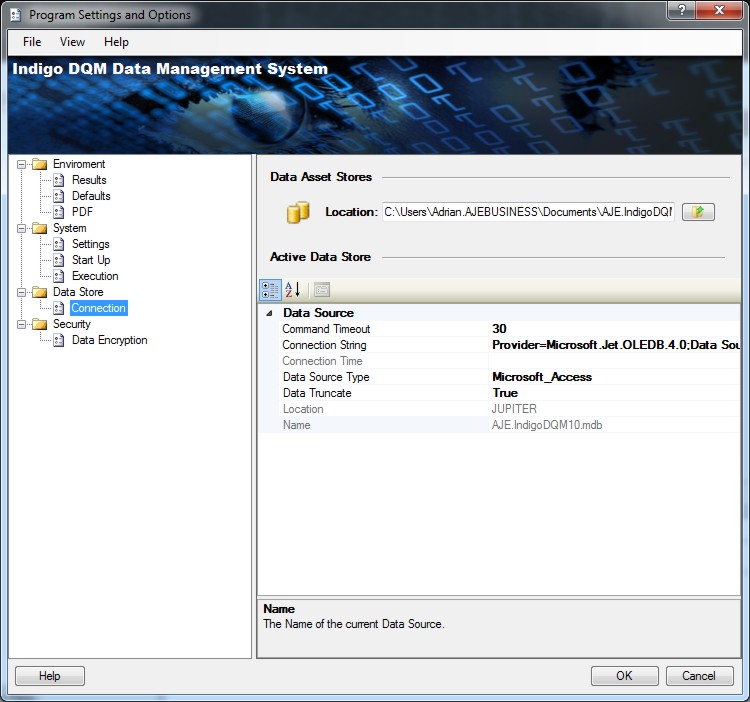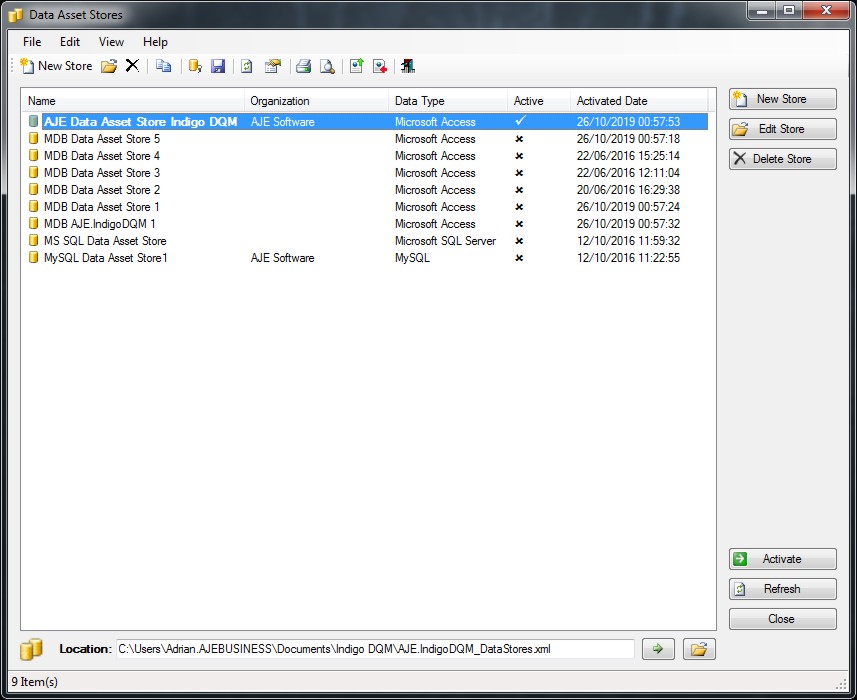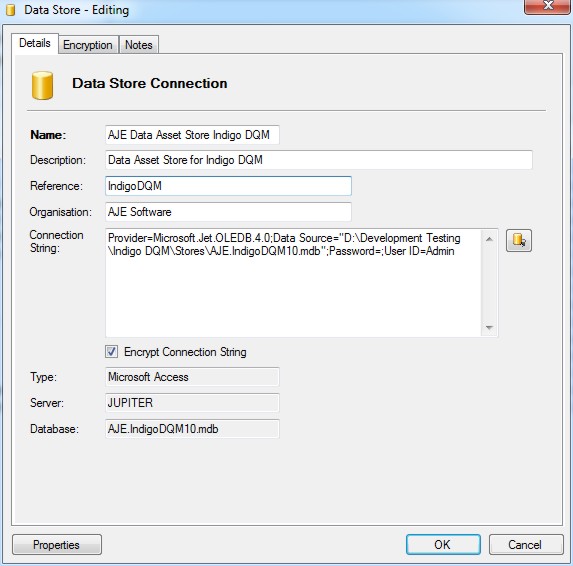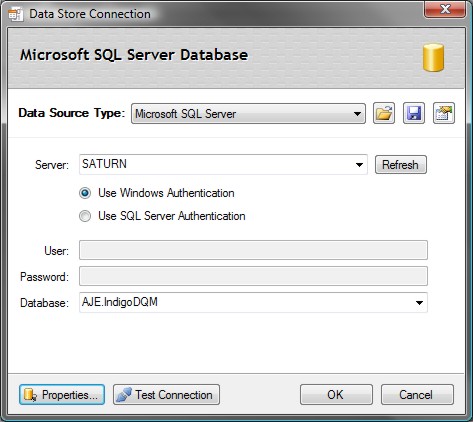The Data Asset Store is a Database that contains all the Data Command Queries, Data Folders, Data Sources, Data Reports, Data Execution Plans and Execution Logs in a shared Data Repository.
Its purpose is to consolidate Data Assets into a shared repository for the most efficient and effective Data Management.
Initially the system comes with a default Data Assets Store as an MDB Database which is installed in the User Documents Folder.
This can be moved to any location including a network share. The Data Store may also reside on another type of database such as Microsoft SQL Server or MySQL. You can migrate the Data Asset Store to another Database using the built-in migration features of the system or with the tools provided with your Database.
To configure the Data Store select the Tools menu and click Data Store Source.
Configuring the Data Store
Select the type for the Data Asset Store from the drop-down list.

The Data Store can also be configured from the 'Program Settings and Options' dialog.

Configuration of multiple Data Asset Stores
Multiple Data Asset Stores can also be setup and activated using the Data Asset Stores configuration utility.

Activate the Data Asset Store by clicking the 'Activate' button and the store will become the active Data Store highlighted in green.
Indigo DQM Data Asset Store supports Microsoft SQL Server, Microsoft Access and MySQL.
Data Asset Stores can be migrated to any of these types using the inbuilt features of the system or with the tools provided with your Database.
Adding a Data Asset Store
Adding a new Data Asset Store using a Microsoft SQL Server Database. Enter the details for the Data Store including a description and reference.

Specifying the connection parameters to the Data Store using the Connection Dialog.

Data Encryption
Indigo DQM features AES 256 Advanced Encryption Standard allowing Data Assets to be stored and transmitted across the Internet / Cloud in the most secure way possible.
Data Result Outputs, Data Source Files, Raw Data and Backup Data can be encrypted and stored securely using the highest level of cryptography.
Encryption can be setup globally or applied to an individual Data Asset Store where a private encryption password will be used for encryption.

To use a private encryption password on the Data Asset Store select the radio button and enter a strong password.
Click the 'Generate' button to automatically create a strong encryption password. The strength of the password is shown by the bar.
Great care must be taken to keep copies of encryption passwords in a secure location. If you lose your password you will not be able to decrypt your Data. You must also remember what password you used to encrypt Data if you decide to change the password at a later stage. Encryption / decryption will only work if the encryption passwords are the same.

The Advanced Encryption Standard (AES) 256 is a symmetrical encryption algorithm that uses a 256-bit encryption key. It is accepted by the U.S. and Canadian governments as the most secure way to store sensitive Data.
With AES-256 bit encryption you can be assured that you will be the only one who can access your critical information.
NOTE: The default encryption password should only be used for testing! You must generate your own secure encryption password!

